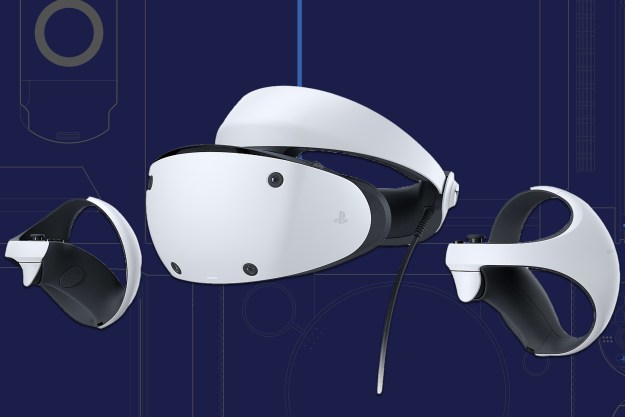Sony gave the first look at the upcoming PlayStation’s controller. Called the DualSense, it’s a significant departure in terms of form from the DualShock design, which was kept relatively unchanged from the original PlayStation through the PlayStation 4. With significant upgrades, such as haptic feedback and adaptive triggers, the DualSense looks to be Sony’s best controller yet and marks a return to the PlayStation’s spirit of innovation after a series of underwhelming revisions.
Unlike the recent DualShock controllers, the DualSense adds new features that will change how players experience games. The adaptive triggers are a notable change that will give developers more freedom than ever. For the first time, game creators can program the resistance players feel when pressing the triggers. It can help players “feel the tactile sensation of drawing a bow and arrow or accelerating an off-road vehicle through rocky terrain,” Sony Interactive Entertainment President Jim Ryan explains.
As the name suggests, allowing players to physically feel the games they’re playing is central to the DualSense’s design philosophy. It’s no longer just an input device but also a way for games to interact with players. Paired with the adaptive triggers is haptic feedback, which replaces the rumble mechanics previously in the DualShock line. This gives players a wider range of feedback, similar to the HD rumble of the Nintendo Switch’s Joy-Con controllers. When combined, these two features add a tactile element long absent from gaming.
The later DualShock models weren’t entirely without innovation and inspired pieces of the upcoming DualSense. The new controller’s Create button is a direct successor from the DualShock 4’s Share button. Sony didn’t provide specifics for the new control, though it’s seemingly doubling down on allowing players to share gameplay moments online. The PlayStation 4 was a big step forward for consoles from a social standpoint, and it’s smart for Sony to continue down that path as both Microsoft and Nintendo add similar buttons to their latest controllers.
The gaming community holds the DualShock line of controllers in high regard based on the level of innovation it originally brought to the table. After quickly replacing Sony’s analog controller and adding in rumble, it became the go-to example of how essential having two analog sticks is for gaming’s future. While alterations were made in the placement of the sticks, both Nintendo and Microsoft made twin joysticks an industry standard in the years following its introduction in 1997.
After the original DualShock disrupted the industry, future revisions became more difficult to spot. The DualShock 2 looked nearly identical, although it sported a major improvement by switching from digital buttons to analog ones. This allowed developers to measure the amount of pressure applied to buttons. Unfortunately, this feature was underutilized, especially by non-exclusive titles, but it did allow for a greater range of input for games that took advantage of the upgrade. The PlayStation version of Metal Gear Solid 3: Snake Eater remains the definitive release with its pressure-sensitive controls allowing players to perform more advanced close-quarters combat maneuvers.
Both the third and fourth iterations of the DualShock would underwhelm in terms of innovation. While they sported some cool features, such as motion control for the DualShock 3 and a touch pad on the DualShock 4, few games used them in a meaningful way. Thatgamecompany’s Flower used motion controls wonderfully, giving players control of the wind. The controls were intuitive and let gamers of all levels take part. But for every Flower, there were dozens of others that forced integration. The frustrating log-balancing scenes in early Uncharted games marred otherwise smooth gameplay. The DualShock 4 added a light bar, which largely functioned as an annoying battery drain until PlayStation VR launched and used the light for controller tracking.
Though each additional DualShock iteration expanded what the controller could do, the DualSense is the first Sony controller since the original analog model to have the potential to change how players interact with games going forward. The haptic feedback and adaptive triggers are the types of changes that excite both players and developers rather than serving as a gimmick players forget about shortly after launch.
With all the extra features, it makes sense that the DualSense brings the first major ergonomic change in Sony’s controller design. PlayStation controllers have largely sported the same mold, with small tweaks over the years, since the original console launched in 1994. The saying “if it ain’t broke, don’t fix it” certainly applies here, but that attitude limits creativity. After 20 years of iteration, Sony is back to truly innovating with its controllers rather than simply improving upon the status quo.
Editors' Recommendations
- Helldivers 2 PC players are furious over this controversial change
- PlayStation has a secret weapon up its sleeve: the Hero Project
- 3 realistic improvements we want to see with PS5 Pro games
- PlayStation VR2 production reportedly paused by Sony
- New PS5 update makes the DualSense’s mic and speaker even better



